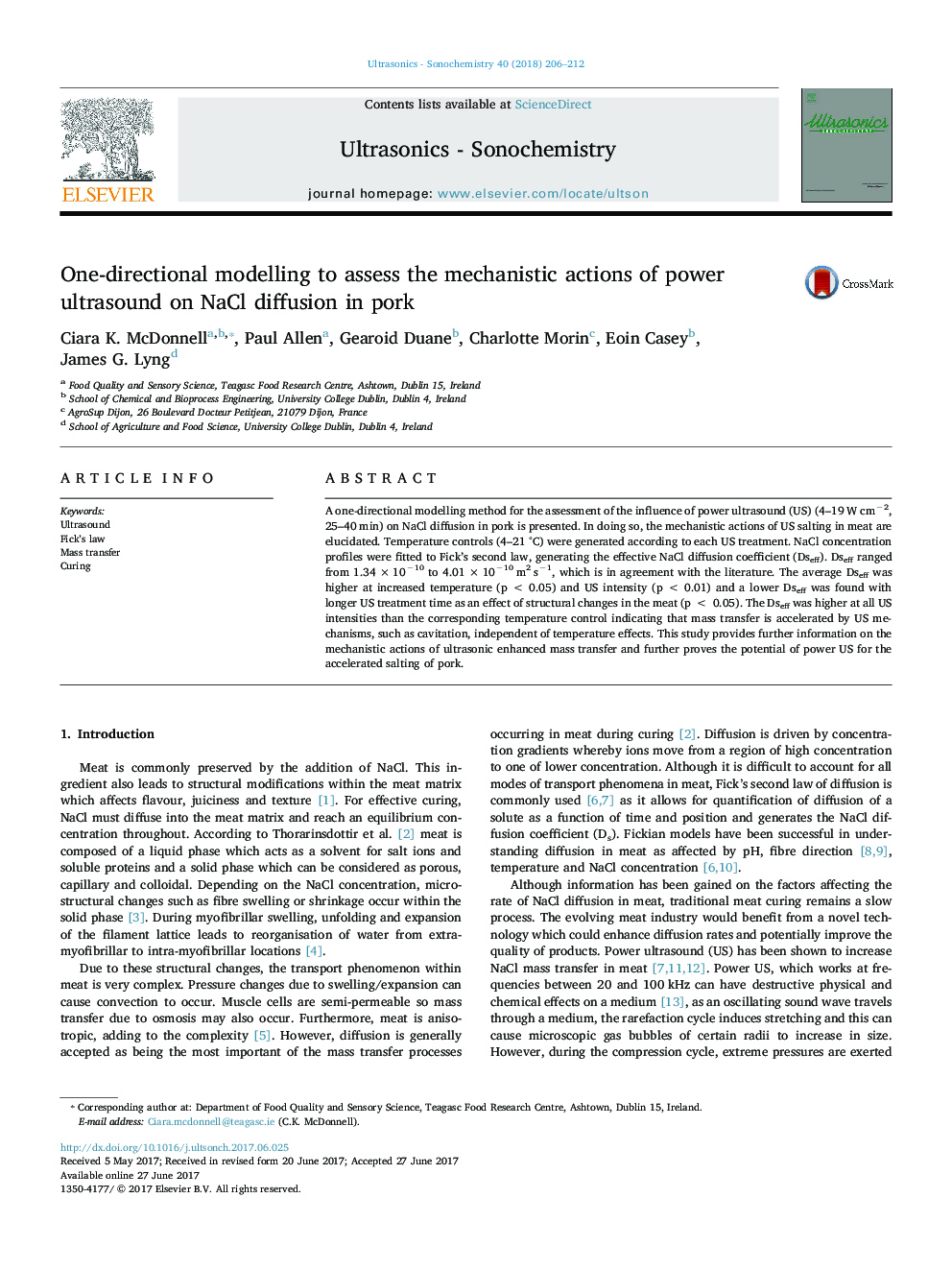| Article ID | Journal | Published Year | Pages | File Type |
|---|---|---|---|---|
| 5144443 | Ultrasonics Sonochemistry | 2018 | 7 Pages |
Abstract
A one-directional modelling method for the assessment of the influence of power ultrasound (US) (4-19 W cmâ2, 25-40 min) on NaCl diffusion in pork is presented. In doing so, the mechanistic actions of US salting in meat are elucidated. Temperature controls (4-21 °C) were generated according to each US treatment. NaCl concentration profiles were fitted to Fick's second law, generating the effective NaCl diffusion coefficient (Dseff). Dseff ranged from 1.34 Ã 10â10 to 4.01 Ã 10â10 m2 sâ1, which is in agreement with the literature. The average Dseff was higher at increased temperature (p < 0.05) and US intensity (p < 0.01) and a lower Dseff was found with longer US treatment time as an effect of structural changes in the meat (p < 0.05). The Dseff was higher at all US intensities than the corresponding temperature control indicating that mass transfer is accelerated by US mechanisms, such as cavitation, independent of temperature effects. This study provides further information on the mechanistic actions of ultrasonic enhanced mass transfer and further proves the potential of power US for the accelerated salting of pork.
Related Topics
Physical Sciences and Engineering
Chemistry
Chemistry (General)
Authors
Ciara K. McDonnell, Paul Allen, Gearoid Duane, Charlotte Morin, Eoin Casey, James G. Lyng,
